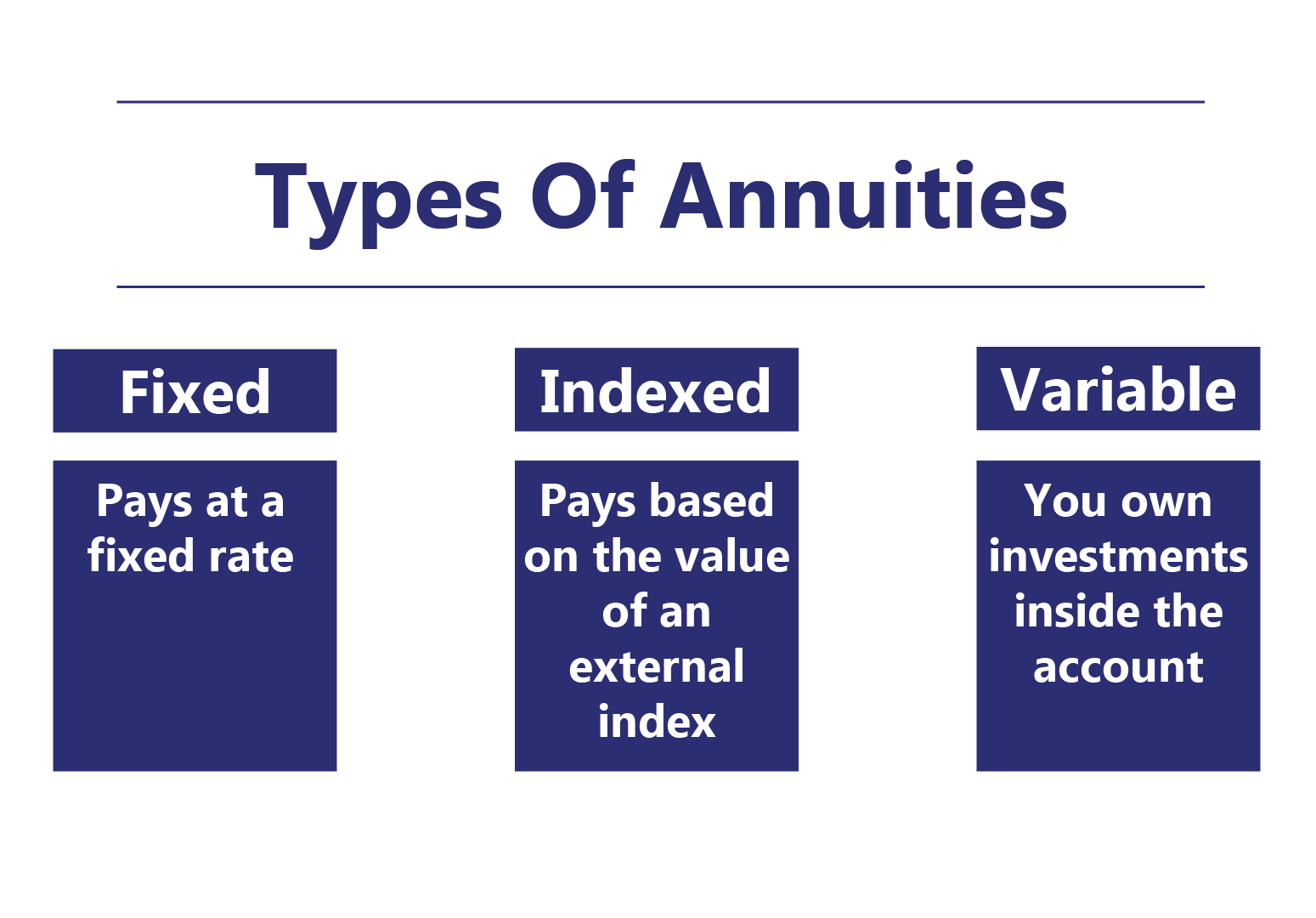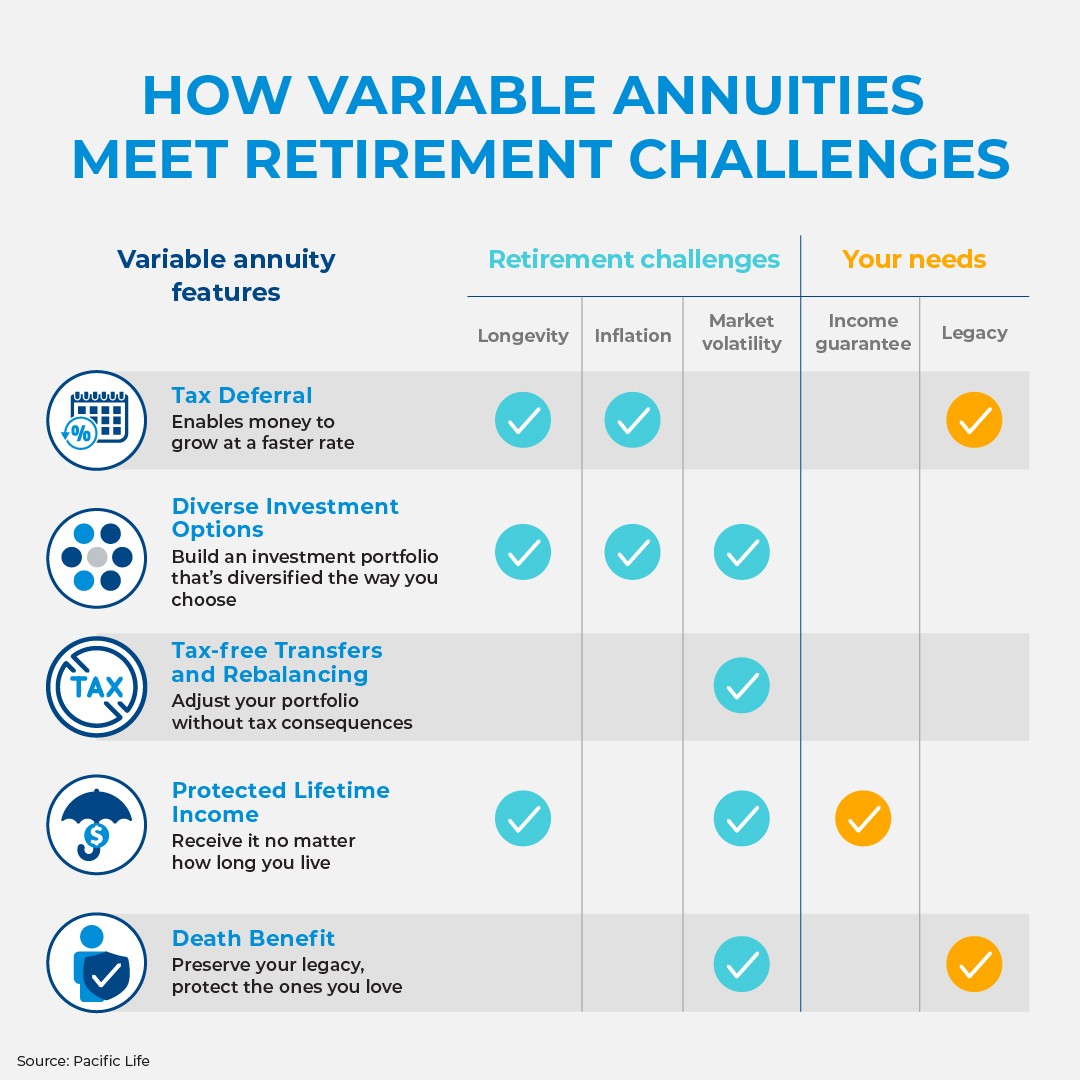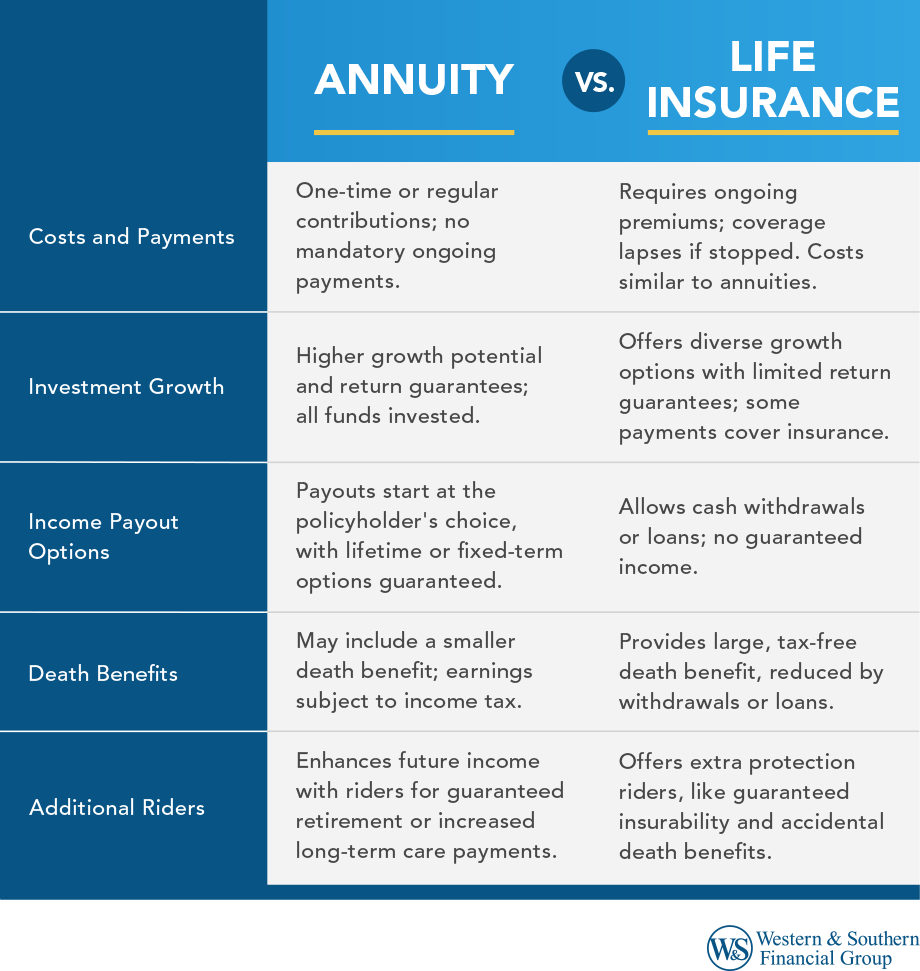All Categories
Featured
Table of Contents
Equally as with a repaired annuity, the owner of a variable annuity pays an insurance policy firm a swelling amount or collection of repayments in exchange for the pledge of a collection of future payments in return. As discussed over, while a fixed annuity grows at an ensured, consistent price, a variable annuity grows at a variable rate that depends upon the efficiency of the underlying investments, called sub-accounts.

During the buildup stage, assets invested in variable annuity sub-accounts grow on a tax-deferred basis and are tired only when the contract owner takes out those profits from the account. After the buildup phase comes the revenue phase. Over time, variable annuity properties need to in theory increase in value up until the contract owner chooses he or she want to begin taking out cash from the account.
The most significant problem that variable annuities generally existing is high cost. Variable annuities have several layers of charges and expenditures that can, in aggregate, produce a drag of up to 3-4% of the contract's value each year.
Highlighting the Key Features of Long-Term Investments A Comprehensive Guide to What Is Variable Annuity Vs Fixed Annuity What Is the Best Retirement Option? Benefits of Choosing the Right Financial Plan Why Fixed Annuity Vs Equity-linked Variable Annuity Matters for Retirement Planning How to Compare Different Investment Plans: How It Works Key Differences Between Different Financial Strategies Understanding the Risks of Long-Term Investments Who Should Consider Variable Annuity Vs Fixed Indexed Annuity? Tips for Choosing the Best Investment Strategy FAQs About Planning Your Financial Future Common Mistakes to Avoid When Planning Your Retirement Financial Planning Simplified: Understanding Your Options A Beginner’s Guide to Smart Investment Decisions A Closer Look at How to Build a Retirement Plan
M&E expense charges are computed as a portion of the contract value Annuity issuers hand down recordkeeping and other management expenses to the agreement owner. This can be in the form of a level yearly charge or a percent of the contract value. Management charges may be consisted of as part of the M&E danger cost or might be evaluated separately.
These costs can vary from 0.1% for easy funds to 1.5% or more for actively managed funds. Annuity agreements can be tailored in a number of means to offer the certain demands of the agreement proprietor. Some typical variable annuity cyclists consist of guaranteed minimum build-up advantage (GMAB), guaranteed minimum withdrawal advantage (GMWB), and guaranteed minimal earnings benefit (GMIB).

Variable annuity payments offer no such tax obligation deduction. Variable annuities tend to be very inefficient lorries for passing wealth to the future generation since they do not delight in a cost-basis modification when the original contract proprietor dies. When the proprietor of a taxable financial investment account dies, the cost bases of the financial investments kept in the account are gotten used to reflect the marketplace rates of those financial investments at the time of the owner's fatality.
Decoding How Investment Plans Work Key Insights on Your Financial Future What Is the Best Retirement Option? Benefits of Variable Vs Fixed Annuity Why Choosing the Right Financial Strategy Can Impact Your Future Fixed Indexed Annuity Vs Market-variable Annuity: How It Works Key Differences Between Different Financial Strategies Understanding the Rewards of Long-Term Investments Who Should Consider Fixed Vs Variable Annuity Pros Cons? Tips for Choosing the Best Investment Strategy FAQs About Variable Annuity Vs Fixed Indexed Annuity Common Mistakes to Avoid When Planning Your Retirement Financial Planning Simplified: Understanding Fixed Vs Variable Annuities A Beginner’s Guide to Smart Investment Decisions A Closer Look at Variable Annuity Vs Fixed Annuity
Such is not the case with variable annuities. Investments held within a variable annuity do not receive a cost-basis change when the original proprietor of the annuity passes away.
One considerable problem related to variable annuities is the potential for disputes of passion that might feed on the part of annuity salesmen. Unlike a monetary expert, who has a fiduciary responsibility to make financial investment choices that profit the customer, an insurance coverage broker has no such fiduciary commitment. Annuity sales are very financially rewarding for the insurance professionals who offer them since of high upfront sales commissions.

Lots of variable annuity agreements contain language which positions a cap on the percent of gain that can be experienced by certain sub-accounts. These caps stop the annuity owner from fully getting involved in a section of gains that could otherwise be enjoyed in years in which markets create substantial returns. From an outsider's viewpoint, it would certainly seem that financiers are trading a cap on investment returns for the aforementioned ensured floor on financial investment returns.
As noted above, surrender costs can drastically restrict an annuity owner's ability to relocate possessions out of an annuity in the early years of the contract. Additionally, while the majority of variable annuities allow contract proprietors to withdraw a defined amount throughout the buildup stage, withdrawals beyond this quantity typically result in a company-imposed cost.
Withdrawals made from a fixed rate of interest investment option could additionally experience a "market value modification" or MVA. An MVA changes the value of the withdrawal to mirror any changes in rate of interest prices from the time that the money was bought the fixed-rate choice to the time that it was withdrawn.

On a regular basis, also the salesmen that market them do not fully comprehend how they function, therefore salesmen sometimes prey on a buyer's feelings to offer variable annuities as opposed to the merits and suitability of the items themselves. Our company believe that investors must completely understand what they have and just how much they are paying to have it.
Analyzing What Is A Variable Annuity Vs A Fixed Annuity A Closer Look at How Retirement Planning Works What Is Fixed Index Annuity Vs Variable Annuity? Pros and Cons of Various Financial Options Why Fixed Vs Variable Annuity Pros Cons Can Impact Your Future Fixed Interest Annuity Vs Variable Investment Annuity: Simplified Key Differences Between Fixed Vs Variable Annuity Pros And Cons Understanding the Key Features of Fixed Vs Variable Annuity Who Should Consider Retirement Income Fixed Vs Variable Annuity? Tips for Choosing the Best Investment Strategy FAQs About Planning Your Financial Future Common Mistakes to Avoid When Choosing a Financial Strategy Financial Planning Simplified: Understanding Your Options A Beginner’s Guide to Smart Investment Decisions A Closer Look at Fixed Income Annuity Vs Variable Annuity
The very same can not be stated for variable annuity properties held in fixed-rate investments. These assets legitimately belong to the insurance provider and would for that reason be at risk if the company were to fall short. In a similar way, any assurances that the insurance policy business has actually accepted supply, such as an assured minimal income advantage, would be in question in case of an organization failure.
Potential buyers of variable annuities need to comprehend and consider the economic condition of the issuing insurance coverage company before entering right into an annuity contract. While the advantages and drawbacks of various types of annuities can be discussed, the genuine problem surrounding annuities is that of viability. Simply put, the concern is: that should have a variable annuity? This question can be challenging to respond to, given the myriad variations offered in the variable annuity cosmos, but there are some basic guidelines that can aid financiers choose whether annuities should contribute in their monetary strategies.
Nevertheless, as the saying goes: "Buyer beware!" This post is prepared by Pekin Hardy Strauss, Inc. Variable annuity fees and expenses. ("Pekin Hardy," dba Pekin Hardy Strauss Wide Range Monitoring) for informational objectives just and is not intended as an offer or solicitation for organization. The information and data in this short article does not make up legal, tax, bookkeeping, investment, or other expert advice
Table of Contents
Latest Posts
Understanding Financial Strategies Key Insights on Your Financial Future Defining the Right Financial Strategy Advantages and Disadvantages of Fixed Income Annuity Vs Variable Annuity Why Immediate Fi
Decoding How Investment Plans Work A Closer Look at What Is A Variable Annuity Vs A Fixed Annuity Breaking Down the Basics of Variable Vs Fixed Annuity Pros and Cons of Annuities Variable Vs Fixed Why
Breaking Down Your Investment Choices Everything You Need to Know About Annuity Fixed Vs Variable What Is the Best Retirement Option? Advantages and Disadvantages of Different Retirement Plans Why Var
More
Latest Posts